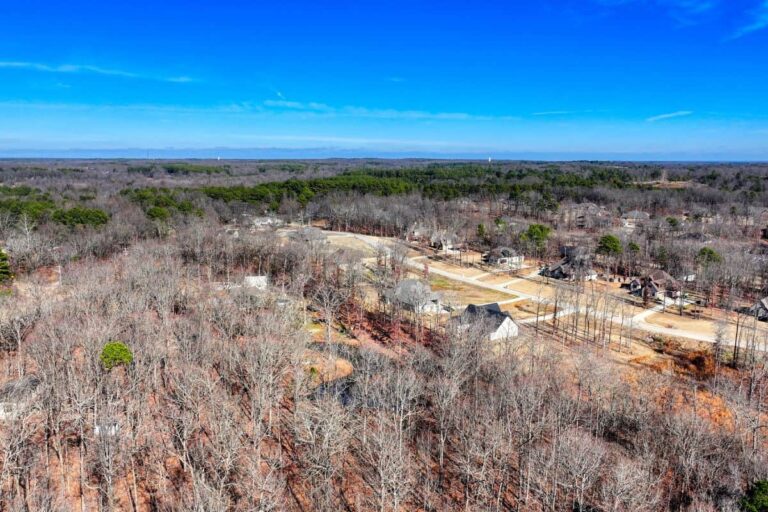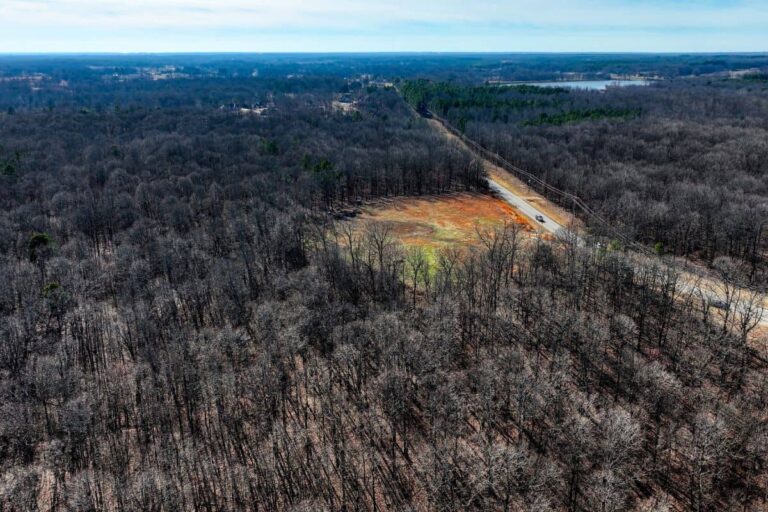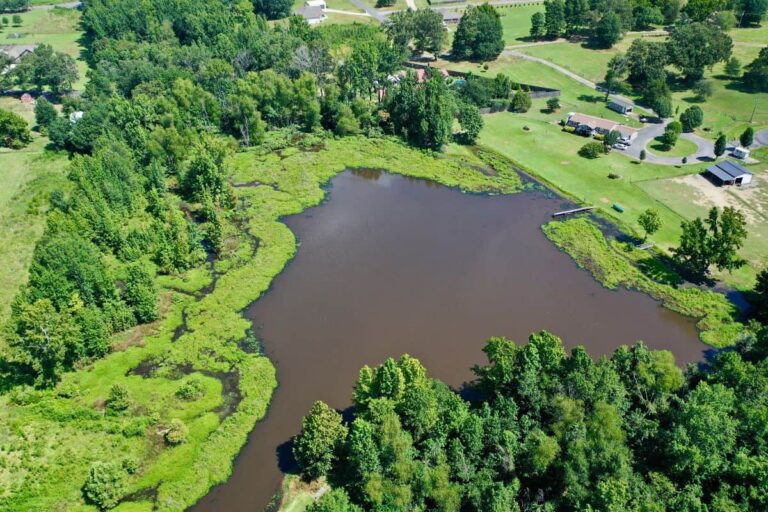The Arkansas land market is a dynamic landscape, constantly shifting with trends in pricing, demand, and regional activity. As we look ahead to 2025, understanding the nuances of land sales in Arkansas can help buyers, sellers, and investors make informed decisions. This report breaks down key patterns, highlights active markets, and offers insights into demographic influences that shape land values across the state.
Key Takeaways
- Northwest Arkansas leads the market with rapid sales and high appreciation rates, making it a hotspot for investors.
- Rural areas like Garland and Baxter counties present a balance of affordability and strong demand for recreational land.
- Dramatic differences in Days on Market across counties mean tailored strategies are essential for buyers and sellers.
- Turnover ratios are crucial for understanding market dynamics; higher ratios indicate fast-moving markets with strong buyer interest.
- Investment opportunities thrive in counties with steady growth, diverse economies, and consistent demand rather than those with sporadic spikes.
Finding Your Sweet Spot: Arkansas Land Pricing Patterns

The Price-Speed Connection: Where Value Meets Demand
It’s interesting how land prices in Arkansas aren’t just about location; it’s also about how fast properties sell. There’s a real connection between the price per acre and how quickly land moves in different counties. Mapping these two things shows some clear patterns, and those patterns can help you make smarter choices.
Think of it this way: if you’re looking for a quick flip, you might focus on areas where land sells fast, even if the price is a bit lower. But if you’re in it for the long haul, slower markets with lower prices could be your thing.
Understanding Turnover Ratio: The Key Market Temperature Gauge
The turnover ratio is basically how many properties sell compared to how many are available. It’s a great way to see how hot or cold a market is. A high ratio means land is selling quickly, and there’s a lot of demand. A low ratio? Things are moving slowly, and buyers have more power. Here’s a quick look at what different turnover ratios might mean:
- High Turnover (above 20%): Seller’s market, prices might be rising.
- Moderate Turnover (10-20%): Balanced market, prices are stable.
- Low Turnover (below 10%): Buyer’s market, prices might be falling.
Real Estate Market Reports
To really get a handle on Arkansas land prices, you need to check out the latest real estate market reports. These reports give you the hard numbers on things like average prices, turnover rates, and inventory levels. Look for reports that break down the data by county or region, so you can see what’s happening in the specific area you’re interested in. Also, pay attention to trends – are prices going up or down? Is the market getting faster or slower? This info is super helpful for making good decisions.
Arkansas’s Hottest Land Markets for 2025
Arkansas’s land market is showing some wild differences in 2025. You’ve got Northwest Arkansas where land is selling super fast, and then you have other areas where it takes much longer to move property. Knowing where the hot spots are is key whether you’re buying, selling, or just trying to invest.
Volume Centers: Arkansas’s Real Estate Powerhouses
Some counties are just busier than others. These are the places where most of the land deals are happening. It’s not just about how fast things sell, but also how many properties are changing hands.
- Benton County is a major player, leading in transaction volume. It reflects strong population growth and economic activity.
- The Little Rock metro area, especially Pulaski County, is also showing impressive activity.
- Garland County, home to Hot Springs, is a recreational hotspot with a good amount of market activity.
Key Takeaways from Market Activity
Northwest Arkansas is really leading the pack with fast sales and rising prices. If you’re looking for growth, that’s the place to be, even if it costs you more. Recreational areas like Garland and Baxter offer a nice balance of reasonable prices and decent demand. The difference in how long it takes to sell land between the fastest and slowest counties means you need different strategies depending on where you’re looking.
If you’re serious about buying in these hot markets, you need to be ready to act fast. Get your finances in order, know what you absolutely need, and be prepared to make a move, especially in Northwest Arkansas and around Little Rock.
Analyzing Turnover Rates Across Regions
Turnover ratio is a simple way to see how fast properties are selling. It’s the percentage of listings that sell in a year. High turnover means demand is high, and properties are selling quickly. According to Marshall Kinzler, a lead appraiser, Northwest Arkansas is seeing crazy demand for rural land, with properties selling before they even get listed publicly. This pushes turnover ratios to levels we haven’t seen in decades.
Demographic Shifts and Their Impact in Arkansas
Population Growth and Land Demand
Arkansas has been seeing a steady uptick in population, and it’s not just random—it’s tied to the job market. More jobs mean more people moving in, and those people need places to live. This population growth is putting pressure on the land market, especially in cities that are doing well. It’s a pretty straightforward supply-and-demand situation. The population growth is influencing the real estate market.
- More people need homes.
- Businesses need space to operate.
- Infrastructure needs to expand.
Economic Drivers Influencing Land Prices
It’s not just about how many people are moving in; it’s also about what kind of jobs they have and how much money they’re making. A strong economy usually means people have more money to spend on things like houses and land. Plus, Arkansas has a relatively low cost of living, which makes it attractive to people from other states. The economic drivers are key to understanding land prices.
If the economy is doing well, land prices tend to go up. If the economy slows down, land prices might stagnate or even decrease. It’s all connected.
Future Projections Based on Demographics
Looking ahead, it seems like Arkansas will continue to grow, especially in certain areas. Cities like Fayetteville and Bentonville are becoming hotspots, attracting younger people and businesses. This growth will likely lead to more development and higher land prices in those areas. Keeping an eye on these demographic trends is crucial for anyone looking to invest in Arkansas land. Detailed housing market reports are invaluable for a complete analysis of the Arkansas real estate market.
- Continued population growth in specific areas.
- Increased demand for housing and commercial space.
- Potential for higher land prices in growing cities.
The Urban-Rural Price Divide in Arkansas Land Markets
Location Matters: Understanding the Value Gap
When it comes to Arkansas land, location is super important. The state’s land market pretty much runs on three different price levels, and these levels are based on how developed an area is, how much economic activity there is, and how close it is to big cities. According to some experts, the price difference between city and country land in Arkansas has gotten way bigger over the last ten years. This has made different markets that work under their own economic rules and attract different buyers.
The Three-Tier Market: Arkansas’s Price Landscape
There are some pretty big price differences across Arkansas. Here’s a quick breakdown:
- Urban Premium Zone: If you’re looking at counties that have big cities or are right next to them, expect to pay top dollar. Think around $18,500 per acre. Places like Pulaski County (Little Rock) and Benton and Washington counties (Northwest Arkansas) are in this category. There’s a lot of competition for land here, and what you can build on it really drives up the price.
- Suburban Middle Ground: The counties around the cities are a bit more reasonable, averaging around $9,200 per acre. Saline, Faulkner, and Lonoke counties are good examples. You get closer to city stuff without the crazy high price.
- Rural Value Opportunities: Most of Arkansas is rural, and the land is much cheaper, around $4,150 per acre. You won’t have all the city conveniences, but you get way more land for your money. This is great if you’re into farming, timber, or just want some peace and quiet. Arkansas land prices are affected by location.
The data shows that urban land is usually twice as expensive as suburban land, and suburban land is more than twice as expensive as rural land. This really shows how much location matters when it comes to price.
Market Dynamics Between Urban and Rural Areas
The price-turnover relationship gives a clear picture of Arkansas’s land markets. Urban counties keep their high prices even with quick sales. There are some good investment chances in rural recreational counties that have okay prices but surprisingly fast sales. Here’s what the data shows:
- Urban Premium + Speed: Major urban counties have the highest prices but still sell pretty fast. Benton County and Washington County are good examples. High prices don’t always mean slow sales if the economy is doing well.
- Rural Value Spectrum: Rural counties have the biggest range in sales speed, even though prices are lower. Some rural counties, like Garland and Baxter, sell almost as fast as urban areas. Meanwhile, some Delta counties have low prices and not much activity.
- Suburban Sweet Spots: Counties around the big cities are usually in the middle for both price and speed. Saline County and Faulkner County are examples of this. They’re a bit more expensive than rural areas but still sell at a decent pace.
Arkansas’s Most Active Land Markets: Supply vs. Demand
Inventory vs. Sales: Where the Volume Lives
This section looks at which Arkansas counties have the most transaction activity, comparing current inventory (active listings) with annual sales. This supply-demand balance shows where the state’s land market is most dynamic.
Identifying High-Activity Counties
Data shows clear patterns in transaction activity across the state. Northwest Arkansas dominates, with Benton County and Washington County leading in transaction volume, reflecting strong population growth and economic vitality. Central Arkansas shows strength, with Pulaski, Saline, and Faulkner counties ranking among the state’s most active markets. Garland County is a recreational hotspot.
- Benton County: 1,031 active listings, 1,299 annual sales
- Washington County: 397 active listings, 363 annual sales
- Pulaski County: 444 active listings, 281 annual sales
Understanding these patterns is key for both buyers and sellers looking to make informed decisions in Arkansas’s land market.
Strategies for Buyers and Sellers in Active Markets
If you’re selling, these transaction hubs provide the greatest pool of active land buyers, with proven market liquidity. Counties where annual sales approach or exceed active inventory offer favorable selling conditions. If you’re investing, these high-volume counties offer easier entry and exit strategies due to market liquidity. For maximum security, target counties with consistent year-over-year activity. The active-to-sold ratio provides insight—counties where demand outpaces supply typically support stronger appreciation and quicker resale potential.
Arkansas’s Top Land Investment Opportunities for 2025
The Triple Play: Value, Growth, and Liquidity
Okay, so you’re thinking about buying land in Arkansas. Smart move! But where do you even start? It’s not just about finding a pretty spot; it’s about finding a smart investment. We’re talking about the trifecta: value, growth potential, and how easy it is to sell when you’re ready. Think of it like this: you want land that’s affordable now, will be worth more later, and won’t sit on the market forever if you decide to cash out.
Emerging Markets for Long-Term Investment
Forget the obvious choices for a minute. Everyone knows about Northwest Arkansas, but what about those areas that are just starting to heat up? We’re keeping an eye on a few spots that could be big in the next few years. Think about counties with new infrastructure projects, growing populations, or untapped recreational potential. These are the places where you can get in early and see some serious returns down the road. For example, some areas near the Buffalo National River are seeing increased interest as tourism grows. Or consider the counties along the I-49 corridor as it expands southward.
Evaluating Risk and Reward in Land Purchases
Let’s be real: every investment has risks. Land is no different. Before you drop a bunch of money, you need to do your homework. What are the zoning regulations? Is the land prone to flooding? What’s the soil like? These things matter! On the flip side, what are the potential rewards? Could you subdivide the property? Is there timber value? Could you lease it out for hunting? It’s all about weighing the pros and cons and making an informed decision. Don’t just listen to some guy on the internet (including me!). Do your own research. Talk to local experts. Get a professional appraisal. Your wallet will thank you.
Investing in land requires patience and a long-term perspective. It’s not a get-rich-quick scheme. Market conditions can change, and it may take time for your investment to pay off. However, with careful planning and due diligence, land can be a valuable addition to your portfolio.
Here’s a quick look at some factors to consider:
- Location, location, location: Still matters! Even within Arkansas, some areas are much more desirable than others.
- Access to utilities: Running power and water can be expensive, so consider properties that already have access.
- Environmental factors: Check for any potential environmental issues, such as contamination or endangered species.
Land Market Trends & Forecasts for Arkansas

Analyzing Historical Data for Future Insights
Looking back helps us see where we might be going. Historical data on land sales in Arkansas provides a solid base for understanding future trends. We can look at things like average sale prices, the number of transactions, and how long properties stay on the market. This information helps investors and sellers make smarter choices. For example, if we see that farm real estate values have been steadily increasing, it might suggest continued growth in that sector.
Expert Predictions on Market Movements
Experts are saying the Arkansas land market will likely keep growing, but maybe not as fast as before. A lot depends on the economy and interest rates. They watch things like job growth and population changes to figure out where the market is headed. It’s a good idea to keep an eye on what these experts are saying, but remember that predictions aren’t always right.
- Continued job growth is expected to support the market.
- Interest rates will play a big role in affordability.
- Population shifts will influence demand in certain areas.
Identifying Key Indicators for Investors
Knowing what to watch can make a big difference. Key indicators help investors spot opportunities and avoid risks. These indicators include things like inventory levels, median home values, and economic growth in different regions. Keeping track of these numbers can help you make informed decisions about buying or selling land.
Watching the Arkansas real estate market is like watching the weather. You can’t control it, but you can prepare for it. By paying attention to historical data, expert predictions, and key indicators, you can make better choices and increase your chances of success.
Wrapping Up the Arkansas Land Sales Scene
So, there you have it. The Arkansas land market is a mixed bag right now. Northwest Arkansas is on fire, with properties flying off the shelves in no time, while some rural areas are just sitting there, waiting for a buyer. If you’re looking to sell, focus on those hot spots where demand is high. For buyers and investors, it’s all about finding the right balance between price and potential growth. Keep an eye on those turnover rates and remember that patience can pay off in slower markets. Whether you’re buying, selling, or just curious, understanding these trends can help you make smarter decisions in this ever-changing landscape.
Frequently Asked Questions
What are the main factors affecting land prices in Arkansas?
Land prices in Arkansas are influenced by location, demand, and economic activity. Areas near cities typically have higher prices due to more buyers wanting to live there.
How can I determine the best time to sell my land in Arkansas?
The best time to sell is when demand is high, which you can check by looking at turnover rates. If properties are selling quickly in your area, it might be a good time to sell.
What is the turnover ratio and why is it important?
The turnover ratio shows how many properties sell compared to how many are listed. A high turnover ratio means properties are selling quickly, which is a good sign for sellers.
Which areas in Arkansas are seeing the most land sales?
Northwest Arkansas, especially Benton and Washington counties, are leading in land sales due to strong demand and economic growth.
What should I consider if I want to invest in Arkansas land?
Look for areas with steady sales and reasonable prices. It’s also wise to consider the long-term potential for growth and the local economy.
How do urban and rural land prices compare in Arkansas?
Urban land prices are generally much higher than rural prices. Urban areas have more demand and development, while rural areas offer lower prices but may have less demand.






